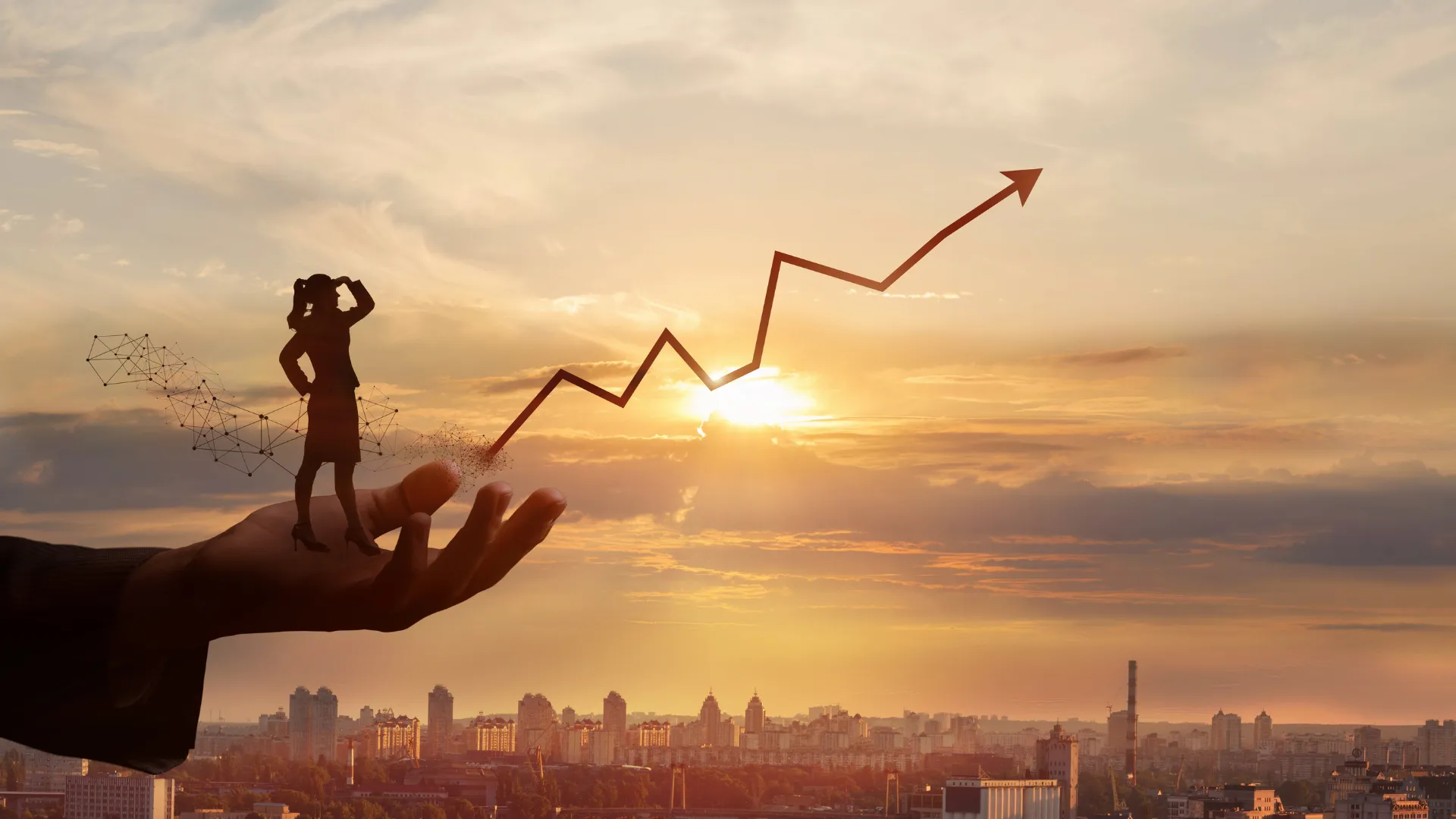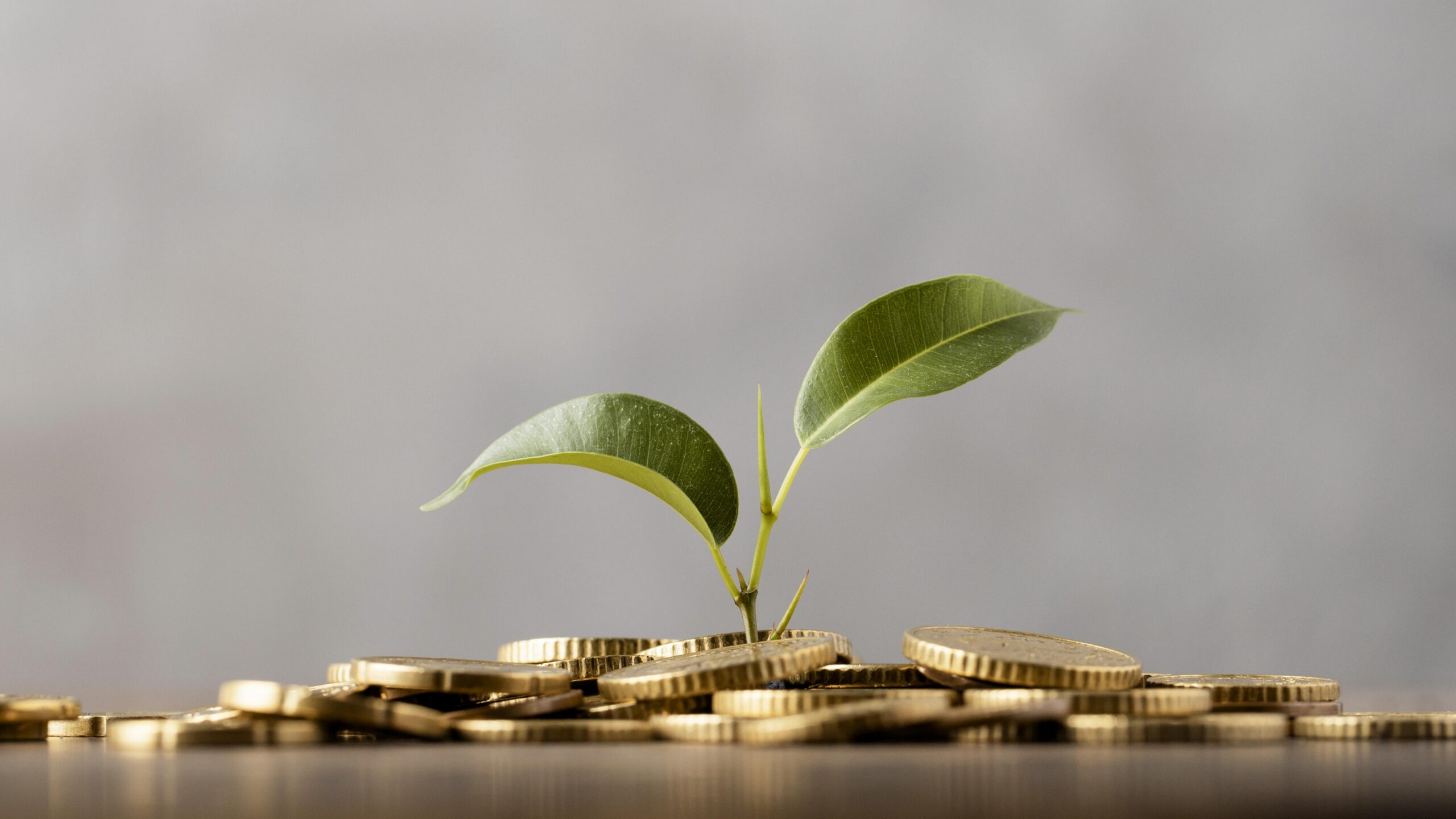Long-Term Stock Investing (Part 1)
Dear investors,
The uncertain times we live in due to the Covid-19 crisis have generated significant market fluctuations, which can cause distress for investors, especially those who have recently started investing in the stock market. Having a historical perspective in these times helps us draw parallels with the present and allows us to imagine what might happen in the future.
With this in mind, last month we wrote a letter addressing the topic of investing in times of crisis. This month, we decided to delve deeper into the topic and offer a broader perspective, comparing equity investments with fixed-income investments over long periods of time.
We've divided the content into two parts. This first letter provides an international perspective comparing the historical returns of stocks vs. fixed income across various countries. The second, which we'll send next month, will discuss the Brazilian context.
In both cases, what's clear is that, in the long run, investing in equities (stocks) yields better returns on capital than fixed income. An important caveat is worth noting: Despite the superiority of equities, we're not recommending that investors invest in equities blindly. Caution is needed and investors should choose both the companies and the timing of their investments wisely (paying too much for a stock, even a good company, can be a poor investment for many years).
The North American example
A very long-term analysis (over 200 years) of the U.S. market demonstrated a persistent gain in equities over other asset classes. The chart below shows the historical inflation-adjusted return from 1800 to 2012:
Chart 1 – Historical real returns of various asset classes1
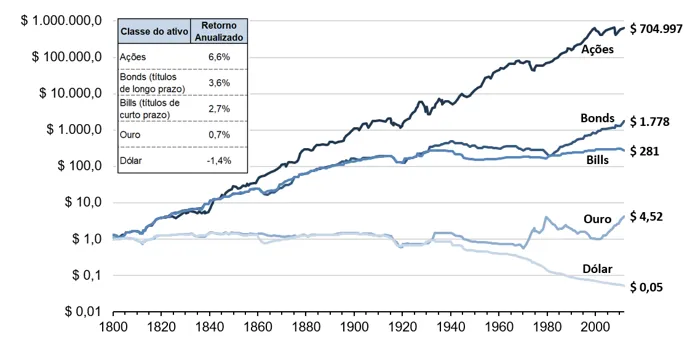
From the chart above, it's clear that stock appreciation not only dominates all other classes but is also incredibly stable over the long term. Over the period, investing in stocks consistently yielded a real return of 6.6% per year—meaning that, at this rate, invested capital doubled every 10–11 years.
From a long-term perspective, market ups and downs generated by alternating periods of optimism and pessimism are not very representative of the general trend of wealth accumulation provided by investing in stocks.
Benchmarks internacionais
Many may criticize the above analysis because it focuses on the United States, a country that over the past 250 years has transformed from a British colony into the world's leading economic power. But an analysis of 20 major global economies shows that equity returns were substantially higher than fixed income returns in all countries analyzed.
Chart 2 – Real Return on Fixed Income vs. Variable Income (in USD, per year)2
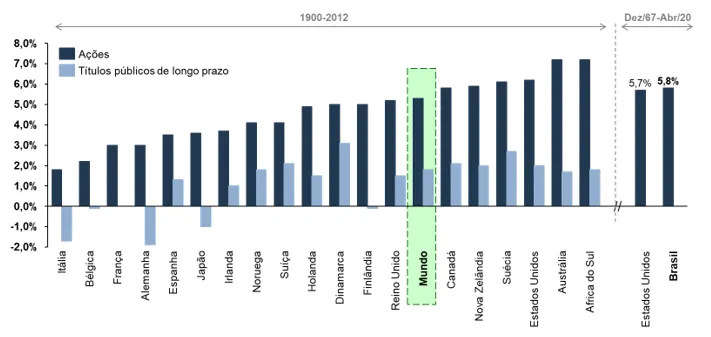
Between 1900 and 2012, real returns ranged from 1.7% per year in Italy to 7.2% per year in Australia and South Africa. The United States, whose data formed the basis for the conclusions in the previous section, returned 6.2% over the period – excellent returns, but not significantly higher than the global average of 5.4%.
This result was achieved despite numerous economic, political, and social changes. Many countries transitioned from an agrarian to an industrial economy, and from an industrial to a service- and technology-oriented economy. During this period, there was also no shortage of crises – since 1900, the world has experienced two world wars, a pandemic (the Spanish Flu), the Great Depression of 1929, the Cold War, the 1970s oil crisis, the attack on the Twin Towers, the 2008 economic crisis, and, most recently, the COVID-19 crisis. Despite this, the historical return of stocks shows impressive resilience.
Although the series used for Brazil is shorter, "only" 52 years compared to 112 years for other economies, we have no basis to believe that this would be different in Brazil. An investor who "bought" the Brazilian Stock Exchange in 1967 and reinvested the dividends received would have had a real annual return of approximately 5.8% per year in dollars in April 2020, slightly higher than the real return of 5.7% per year obtained by investing in the American stock exchange during that period.
Regarding the results for Brazil, we analyze them in more detail in part 2 of this letter.
Discussion about risks
The analysis wouldn't be complete without also considering the worst-case scenario: suppose an investor entered the stock market just before a major devaluation. Wouldn't it have been better to invest in fixed income? The truth is, if the investment period is just a few years, stocks can indeed yield poor returns—in the worst-case scenario, a 1-year investment in the American stock market yielded a return of -38.6% versus a return of -15.6% for short-term fixed income (bills). However, over a longer period, the risks are limited. The worst annualized return for a 10-year investment window in the American stock market was -4.1%, higher than the lowest return obtained in fixed income over the same 10-year period, which was -5.1%. Over a 30-year period, the worst return for a stock market investment was +2.6% per year!
Chart 3 – Highest and lowest returns on investments in stocks, short-term and long-term fixed income for holding periods of 1, 2, 5, 10, 20 and 30 years between 1802 and 2012 in the US3
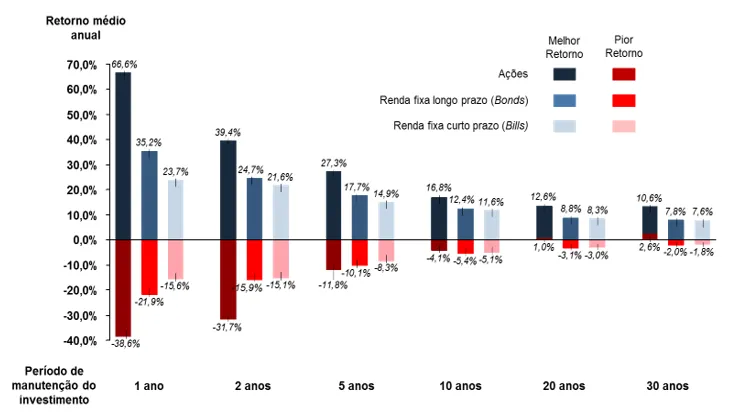
The stock market risk profile is in line with the data in the table below, which shows a very interesting fact:
Table 1 – Return on variable income vs. fixed income for different investment maintenance periods (Analysis between 1802 and 2012 for the American market)4
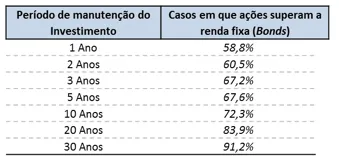
Considering investments with a 1-year term, stocks outperformed fixed income approximately 60% of the time. In other words, for every 5 years of investment, fixed income outperformed the stock market in 2 years! On the other hand, for an investment held in a portfolio for 30 years, the stock market outperformed fixed income 91% of the time (considering the last 210 years). This point is important because many investors often "reallocate" their portfolios in pursuit of the best returns, but in fact, end up missing out on the best opportunities!
An analysis of the US market illustrates the impact a hypothetical investor would suffer from being out of the market for just a few of the best market return days in the last 36 years!
Chart 4 – Hypothetical growth of a USD 1.00 investment in the S&P 500 from January 1, 1980, to May 20, 20165
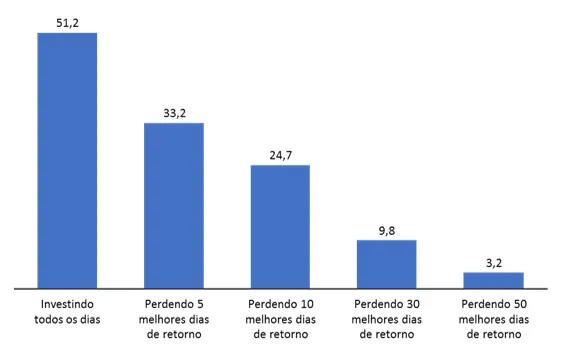
The truth is that, in addition to the transaction costs (brokerage fees, capital gains tax) involved in portfolio switching, timing the market is extremely difficult, even for the best managers. High interest rates often occur in times of crisis, precisely when the stock market is cheap and offers real bargains. Therefore, instead of trying to nail down the optimal portfolio, it's better to stick to what's good and familiar, and avoid the risk of making mistakes.
All of the above analyses consider a stock market investment to be an investment in that market's stock index. We believe that a manager who shares a long-term philosophy and selects the best stocks (good companies at a good price) for their portfolio can achieve even better performance.
The rationale behind stock returns
After reviewing the historical evidence and the undeniable superiority of stocks over other asset classes over the past 200 years, the questions that remain are: Why does this happen? And what can we expect for the future?
First, shares are fractions of a company's capital, allowing investors to benefit from the profits generated by such companies. Some of these profits can be paid directly in the form of dividends or share buybacks, and some can be reinvested, either to expand operations or make acquisitions. Regardless of the use, in the long term, a stock's return tends to follow the growth of profits and the dividends received by the company.
When we analyze the market as a whole, corporate profit growth is closely tied to economic growth, which has been extremely robust, especially since the mid-19th century. The chart below shows global GDP per capita from 1500 to the present day.
Chart 5 – Global GDP per capita (In USD thousands, 2017 values)6
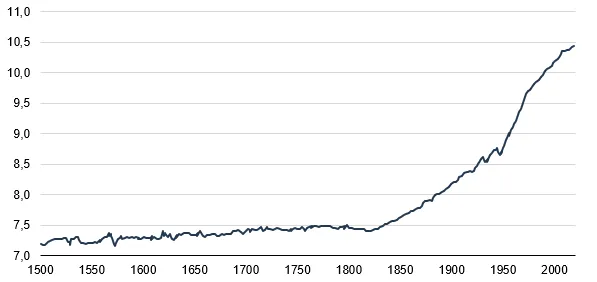
What underlies this growth is the steady increase in productivity that humanity has observed. People study, learn, and develop new technologies. Each generation builds on and perfects the technologies developed by the previous generation, and through this accumulated knowledge, the world has increasingly efficient ways of developing products and services. In addition to leading to economic growth, increased productivity also brings an improvement in the living conditions of the population as a whole.
Looking ahead, the trend is for the growth rate of human productivity (and, consequently, economic growth) to continue. The current Covid-19 crisis poses many challenges, but it also highlights our incredible technological development – the remote work that many of us can now do without major difficulties is only possible thanks to technologies developed over the past few decades. The crisis also forces us to be increasingly productive, with trends that already existed before the crisis being accelerated (online shopping, digital banking, industrial automation, among others). Although the duration and economic impacts of Covid-19 are still quite uncertain, the evidence from this crisis only reinforces our conviction in the long-term trend of economic development and stock appreciation.
1, 2, 3, 4Source: Stocks for the Long Run, Jeremy J. Siegel (2014)
5Source: Fidelity – FMRCo Asset Allocation Research Team
6Source: The Changing World Order: Why Nations Succeed Or Fail, Ray Dalio, 2020

